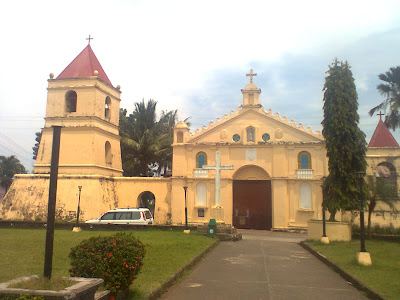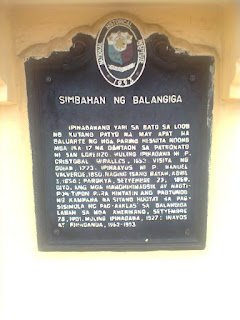Balangiga Church
What's so special about the place? Anyone who came in that church can spot the clues by walking around.
church marker
If you think already that you see the picture here, you better think again. Why would the townsfolk attack the visiting American troops for the first place? Nobody attacks in group without a reason. And this reason is unfortunately, a subject of debate between the local and the western historians. Some say the cause was a miscommunication between the two parties (just like any stupid war of history) while others say that it was a legitimate action by the local folk being sanctioned economically by the Americans after the blockage of three key trading ports in the south of Samar namely Guiuan, Basey, and Balangiga ports.
The Balangiga Massacre consequentially, was an act of retaliation by the American forces from a very humiliating defeat in the hands of the natives. It was a direct obedience from an order by General Jacob Smith to "kill everyone over ten." Today, they are still keeping the Bells of Balangiga Church as war trophies and the Philippine government is pursuing the peaceful means to reclaim the bells.
Balangiga Shrine (Plaza)
September 28, 1901 Death Toll
We came in the town 5 minutes past eleven in the morning and we were almost stepping on our shadows that day, obviously it was a better time to take shelter from the scorching sun and humidity. For local folks, it was an ideal time for lunch but we just came from a 'merienda' and we were accustomed to a late lunch, given the target area for our lunch was the next town of Giporlos. It was our fist time to come in that town but strangely I already felt the nostalgia. It felt like I've been in that place before. In my head I recalled the memories of actual stories, photographs, and newspaper reportage from that sad and eventful day of September 28, 1901.
After seeing the shrine markers and taking photographs, the faces of my companions transformed from confusion to enlightenment and probably, skeptical reverence.
They understood why we have to stop over. Our forefathers genuinely fought for freedom in that town.
New York Journal - May 5,1902
road tracks - July 17, 2011





No comments:
Post a Comment
Please share your comments here!